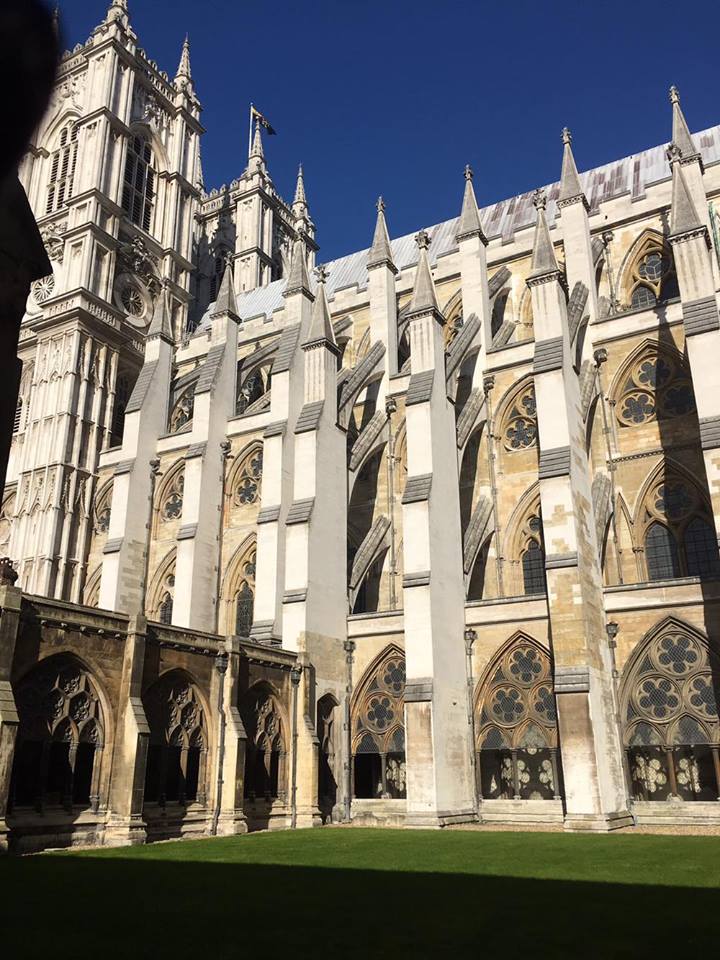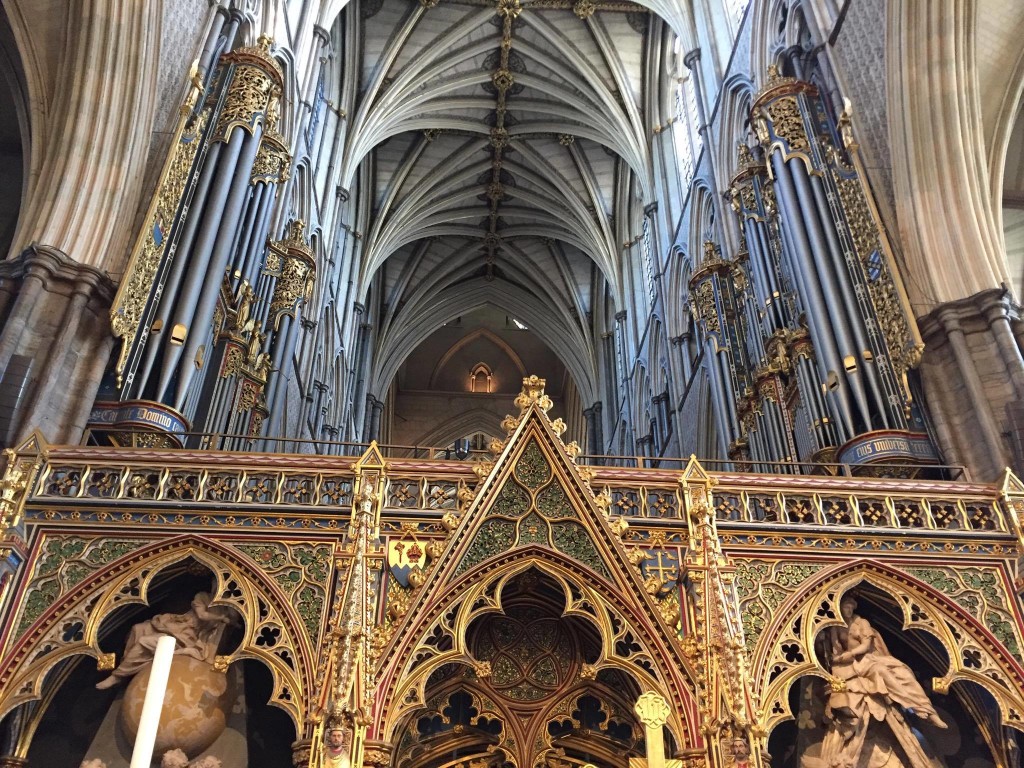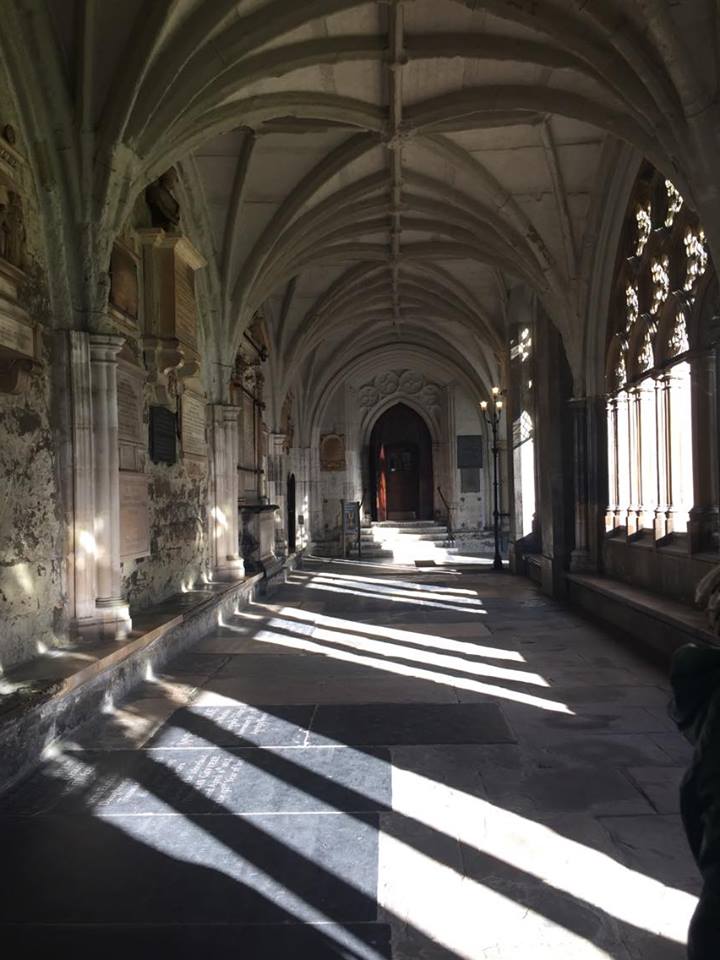Westminster Abbey represents monastic history dating back to 960 AD. The Abbey itself was first built by Edward the Confessor in 1065 and was later rebuilt by Henry III in 1245. This history was evident as we entered and stood by the Cloisters, a sunny courtyard around which monks would have walked on day to day business.
Moving on we entered the Nave and the tall vaulted ceiling made evident the importance of this Abbey as a centre of religious and architectural development. Its importance as a centre of royal power was made further evident as we were able to look upon the coronation chair. Edward I built the coronation chair in 1301 to house the Stone of Scone and the chair is reflective of the history of royal coronations dating back to William the Conqueror.
Moving through the Nave, we were able to view the grave of the unknown soldier, one of a selection of memorials to soldiers from the two world wars. In front of us were two impressive altars, of which the high altar was particularly interesting. This altar was concealed from the masses as they were not supposed to see the transubstantiation
We then entered the Lady Chapel and it was difficult not to miss the impressive ceiling. Known as the pendant Fan Vault, this beautiful structure was known as the climax of English medieval vault design and was one example of the grand and decorative gothic style which began to emerge in the medieval period. This was not the original Lady Chapel however. In 1220 Henry III lay the foundation stone of the old Lady Chapel which became a famous musical institution. This was demolished in 1502 when Henry VII put forward plans for a new Lady Chapel.
Despite the gothic architecture, there were still remnants of the old Romanesque architectural influences. We entered the Romanesque chapel contrasting its dark and compact atmosphere with the open nature of the nave.
The central point of the Abbey is the Shrine of Edward the Confessor, around which we sat and listened to a prayer. The tombs size and opulence made clear the importance of Edward as the patron saint of the Abbey. Later kings attempted to be buried as close to Edward as possible, further emphasising his central importance to the Abbey.
Poets’ corner was a place of interest, an area dedicated to some of the greatest British writers with memorials and busts and their burial places. We passed this area on the way to chapter house, an octagonal room in which Monks would meet daily to read a chapter from the rule of St. Benedict. The room was decorated from scenes of the revelation, an apocalyptic story of the bible. This was a feature that would have been noticeable prior to reformation, as much of the Abbey was decorated in a similar manner.



